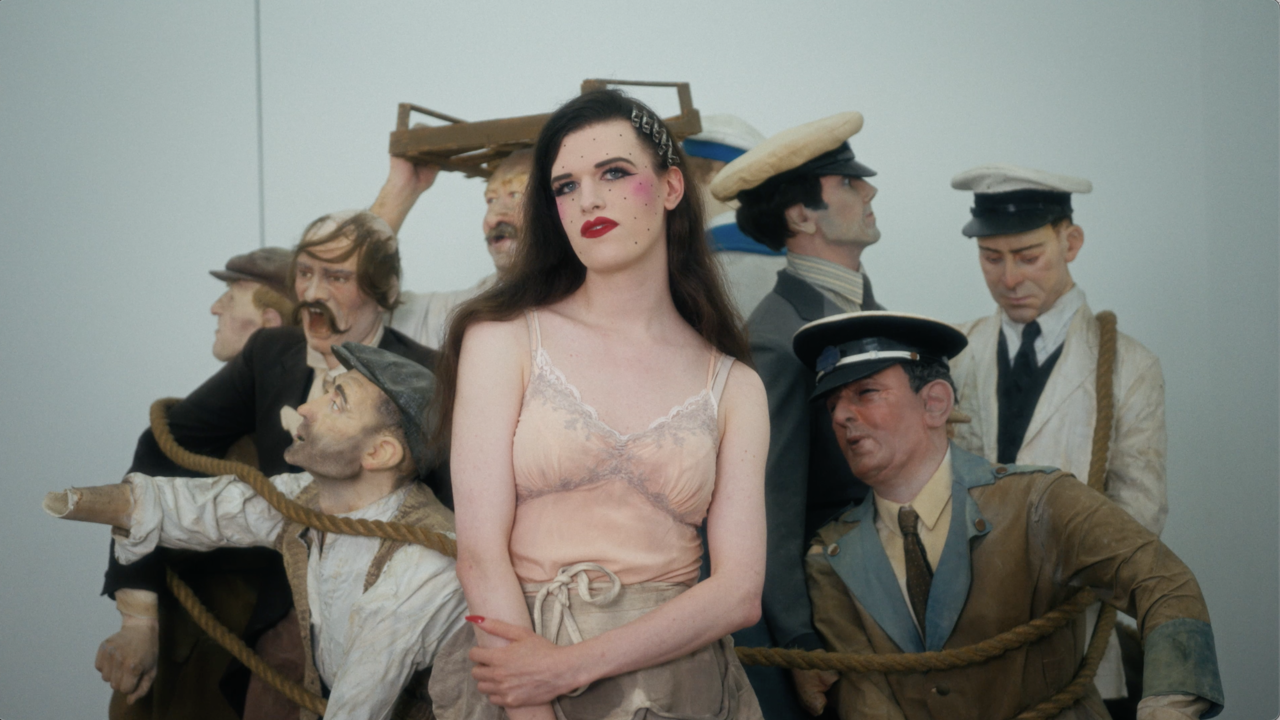Peter Wächtler
How … it works
How … it works

Towards the end of Peter Wächtler’s film Untitled (2013) the artist breaks from a densely repetitive recitation of his prose poetry – delivered in his laconic, German-accented nasal English – to launch into a plaintive rendition of Bruce Springsteen’s The River (1981). It’s a gulped shot of absurdity typical in his films – perhaps better described as illustrated prose poems – that otherwise bear the self-obsessed, confessional tone of the hang-dog miserablist at one’s local bar.

Wächtler works in a variety of media – film, text, ceramics, sculpture, charcoal and pen drawings and sound pieces – but his primary matter could well be his own pathologies: that of a German artist now living in Brussels, who hated his art school, made a documentary about his uncle (a frustrated musician and stall-holder in a small German town) and who published a short story, The Set (2011), of his experience as an extra in the Tom Cruise-starring World War II film Valkyrie (2008), shot in and around Berlin.
In Wächtler’s own film, Untitled, which he showed at Ludlow 38, New York in January, the artist recites a prose poem simply structured by the insistent refrain: ‘How I …’ Just as in another of his films Untitled (Heat Up the Nickle) (2013), currently included in the 12th Lyon Biennale, each stanza recounts a memory, an anecdote, a made-up scenario: ‘How I woke up, after a night out, and felt deeply embarrassed, after a long booze with a bad actor, who told me that he had almost worked with Brad […] How I cheated on you for the first time.’ The short looping animation – of a waist-coated rat slinking off to bed in a basement hovel, dragging himself out, lifting a bowling ball onto a table only for it to fall on his head each time he returns – is a scene of such clichéd comi-tragedy as to raise suspicion of the artist’s true intentions. But Wächtler is serious in his silliness: he finds solace and humour in the heartfelt but knows the worth of honest abstraction. The animation lends both comfort and cloak, providing the safety of both childhood remembrance and arms-length commiseration. If the artist peddles in melancholia, it’s with a David Lynchian nose for punctuated absurdity – the peppering of his self-aware nihilistic dejection with hunks of ironic cheer.

One might compare Peter Wächtler’s latest film Untitled (Heat Up the Nickle) (2013) with Vincent Van Gogh’s Sorrowing Old Man (At Eternity’s Gate) (1890). Both show a scene of isolation and despair: an old man sitting by a fire, head in hands. ‘Sorrowing’ is a similarly apt description for Wächtler’s film: his wallow moves, stop-motion – like Untitled, comprising just enough animation to hold our attention – through his dextrous plays on the simple intro: ‘It works …’ Towards the end of the film Wächtler’s old man stands, howls like a wolf, drops to his knees and plants his head in the open fire.
Dense with words rather than images, Wächtler’s films hint towards the artist’s consistently productive output: writing. His prose is simple, stark, unashamedly laced with mistakes and German-English syntax. Tales such as the untitled story he read at Artists Space in New York this past summer are doubtless embellished, and some could well be made up. That story recounted an awkward dinner with an ex-girlfriend and her new muscled, long-haired lover, Ragnar Pluto, with a magnificent horse-sized penis. Coloured with emotion just a notch too heartfelt, the scenarios are likewise just a tad too funny to be true. Willfully de-skilled, Wächtler’s semi-fictionalized writing still happily bears the learnt grit of real life experience, in all its mediocrity and unscripted comedy.
For his 2012 solo Das Kino im Alten Mühlenviertel (The Cinema in the Old Mill Quarter) at Lars Friedrich, Berlin, Wächtler showed three bottle-green ceramic block sculptures, each containing a speaker playing sounds of a ship mooring, a broken inkjet printer, the American spiritual Go Down, Moses (c.1862) and a karaoke version of U2’s 1987 hit With Or Without You. The ceramics show tableaux of woodcut-like illustrations – folksy, gothic scenes turned horribly modern: woodsmen in a street sawing a felled tree-cum-chimney, or a bar scene with two people inexplicably lashed together on the floor. We recognize the romantic trope of the homeless wanderer or the medieval bar-and-street scene – perhaps an illustration from Hans Holbein the Younger’s Dance of Death series (1523–26) – but these associations are teasing and misleading. Just as with the concealed realities of his fictional writing and films, Wächtler’s brutal honesty remains just a refrain away from a total revealing.






















